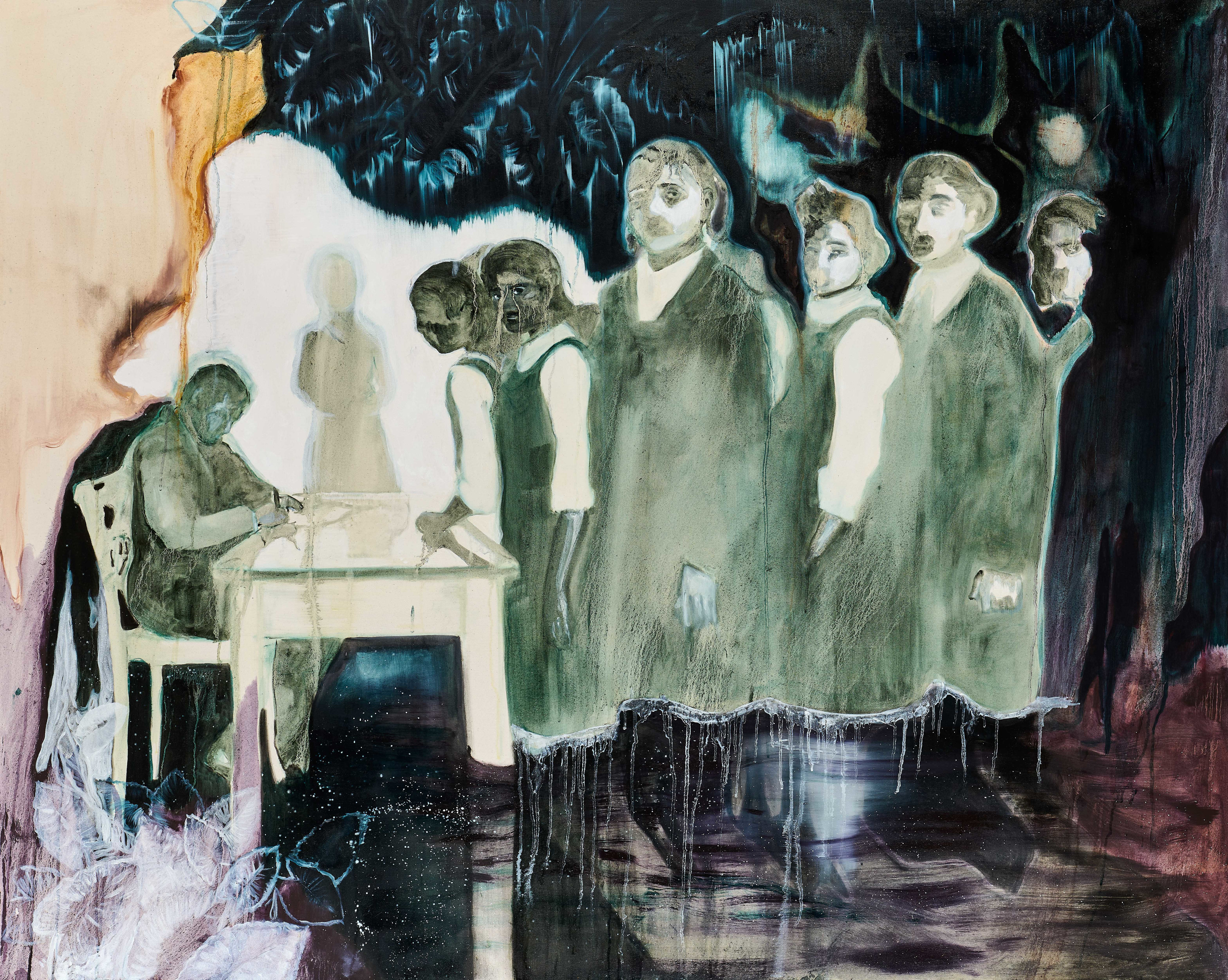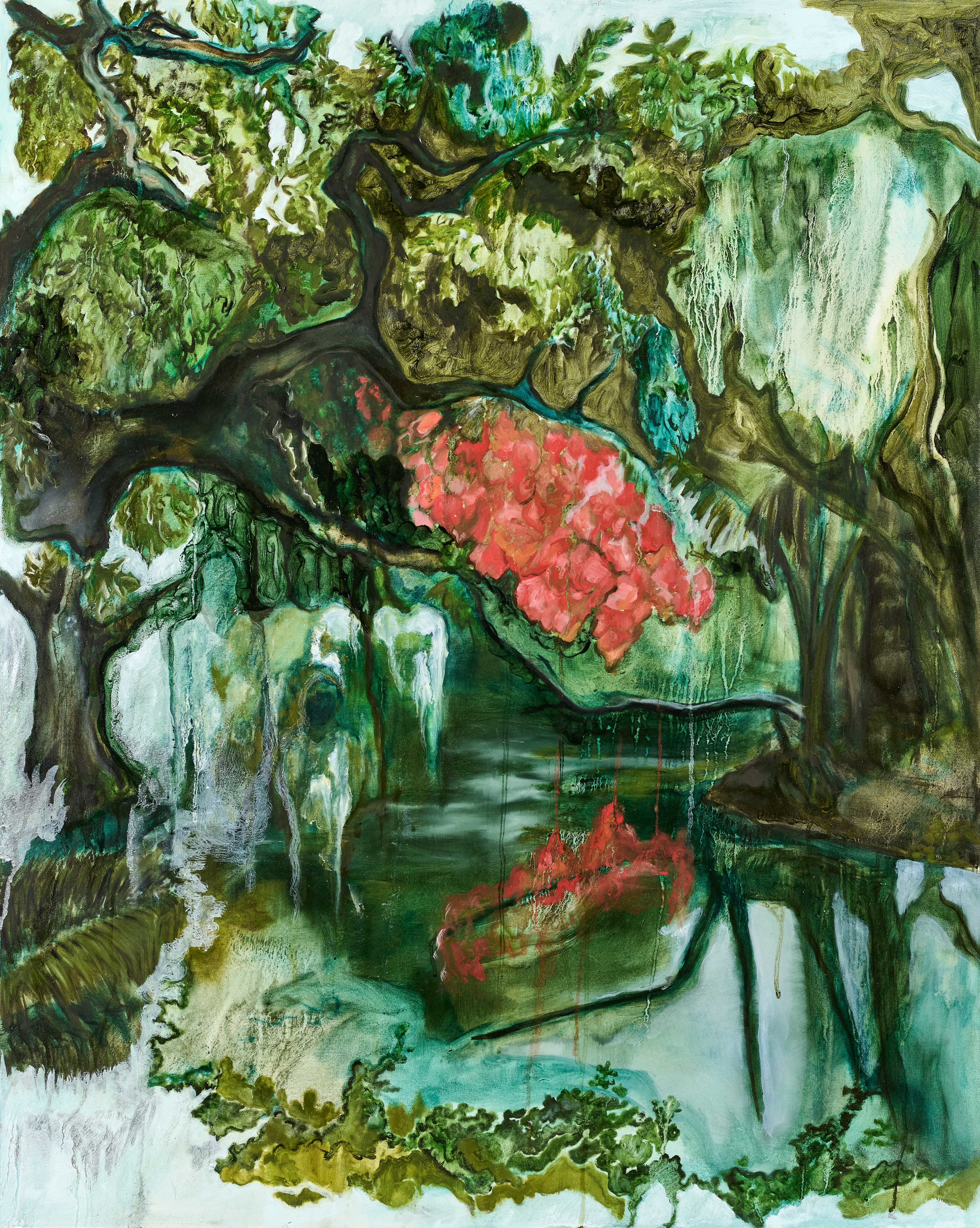Ravelle Pillay | Tide and Seed
Goodman Gallery Johannesburg
25 August - 30 September 2022
Head-Image
Goodman Gallery is pleased to present Tide and Seed, a solo exhibition by Ravelle Pillay and her first with the gallery. Featuring a selection of new paintings, this exhibition expresses Pillay’s core thematic considerations and unpacks the historical context that informs her practice.
As a descendant of labourers who were transported to the former British colony of Natal as part of a larger system of Indian indenture, Pillay’s work is closely informed by legacies of colonialism, and their reverberations in the present. Pillay uses painting and drawing as a material means through which to explore how colonial legacies have found form in personal and collective memory, the natural world, and in the idea of haunting.
Pillay’s borrowed archive of her grandmother’s photo albums provides a foundation to the subject matter of her paintings and into understanding her family’s history within a larger narrative: the displacement of indentured migrants, the still-present spectres of Apartheid, and of place and belonging. As Pillay writes, “I started to think more about life-making inside of these systems, how lives were made ‘in spite of’ and ‘in defiance’.”
The title of the exhibition is an entry point into Pillay’s metaphorical reflections. ‘Tide’ invokes a foundational thought across this body of work - of the ocean’s agency and desire, allowing ships to sail over its body, and its role as a repository for memory and physical bodies and objects through residence time. While ‘seed’ references life in multiple forms; the unfamiliar landscape those who were indentured found themselves in, and the connections between Natal and other sites of indenture, as well as the seeds, both literal and metaphorical that transformed South African topography. Tide and Seed seeks to invoke shared histories of migration, family and our psycho-geographic connections with the natural world.



Figures merge into scenes of the natural world in Pillay’s paintings. Banana leaves, palm fronds, roots, and pools of water become dense mangroves. Pillay is interested in how the natural world can be a repository for memory and the involuntary role it has had to play in human history – oceans that have held ships and consumed bodies, cane fields that witness and thickets that conceal.
Pillay’s practice is concerned not only with the archive, but with the material possibilities of painting. She often allows paint and mediums to interact in accordance with their natures on the surface of the canvas. The material degradation or evolution over time provides a way to consider the unreliability of memory and to question the act of remembrance. For Pillay, painting is a mediation between past and present - the painting process an act of seeing, and communion with the ghosts that populate our lives.





Ravelle Pillay (b.1993) is a South African artist living and working in Johannesburg. Working primarily in painting, her work considers the legacies of colonialism and migration, and their subsequent hauntings and reverberations in the present. She draws from found and family photographs and the material degradation of images over time as a way to consider agency, memory, and life-making. Her practice is concerned not only with the figurative and historical but with the material possibilities of painting, and of painting as a language for communion and mediation between past and present.
Pillay holds a degree in Fine Art from the University of the Witwatersrand. Her work has featured in exhibitions including Silence Calling from One Continent to Another (Goodman Gallery, 2021), the Investec Cape Town Art Fair (2022), 12 Hours of Breathing, (99 Loop Gallery, 2021) and Divided Self (P72 Projects/ Kalashnikovv Gallery, 2021) Pillay is the first prize recipient of the 2022 African Art Galleries Association’s Emerging Painting Invitational for painters from the African continent.
Pillay will have a solo exhibition of new works at Goodman Gallery Johannesburg in September 2022, and will be in residence at Gasworks, London from October to December 2022.